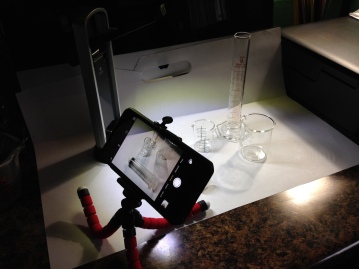This past week our family reached a couple of milestones. Son 1 was awarded his certification and is on the road to professional employment. Son 2 was promoted into the first rung of management. They are setting out toward successfully adulting. As they spread their wings to fly, momma bird is proud – and a bit relieved. Twenty four of my forty eight years have been spent momma birding. But then, momma birding never really stops – it just changes form. Just ask my own momma bird, her phone chirping away, signaling questions and updates – her nest of baby birds in her pocket.
Still, even before I had little family birds, I had students. This month I’ve finished my 25th year of teaching college, and have started what I hope will be at least another 25 years. As I look at my teaching methods and priorities now, I see how much has changed over the years. When I first started, it was definitely a “sage on the stage” and “facts from the books” environment. There was no convenient internet access. No email. No text messaging.
Ten years after I started teaching college, I was trained to be a medical school facilitator for the problem based learning curriculum. “Sage on the stage” became a sort of academic insult – “guide on the side” became the in phrase. I started developing my own case studies and implemented discussion groups in my community college courses as well.
Now, with mobile “always on” having reached saturation among students, I’ve transitioned almost fully away from my “sage on the stage” beginnings. I also find myself moving further away from a reliance on books each year. Students still need the guide on the side – they need someone to help them take a machete to the information overgrowth so they can find the path. My teaching now is less about focusing on the facts – those can be harvested from books and other sources. The purpose of teaching as I see it now, is the human connection – the lighting of the fire, the bringing the lens into focus. To do that fully, I need to deconstruct the knowledge silos. Moving forward, that is my focus, the “grand design of it all” – the linking of ideas in videos and animations. The development of content that students want to learn. The giving as much or as little as a student needs to reach mastery of the information. To help build new nurses and trainers. Not to obsess over points or quizzes or test banks – the “factory model”. It’s time to move beyond that – to integrate the content. For, life is integrated – it is universal – to say “now we learn about the hormones of the stomach, don’t worry about the bacteria within it” and then to switch classes and say “now we learn about the bacteria of the stomach, don’t worry about the hormones” seems silly somehow. It’s all connected – life doesn’t separate one from the other.
My word of the year for 2016 is “Integrate”. My goal is to extract the big concepts and  build a core framework for all of my courses that shows the connection points and branches of the material. It’s going to be a huge project, one that will take many years. It will include a variety of tools – from OERs to commercial materials. But, when it is finished, I envision a map – like a garden pathway – with points of interest and places to stop and explore awhile. There will be starting gates, and some bridges to be crossed. There will even be some challenging climbs for those up to it. But, above all, it will be a place students feel safe to explore and learn. Somewhere they will leave, having learned, but where they can always come back to learn more.
build a core framework for all of my courses that shows the connection points and branches of the material. It’s going to be a huge project, one that will take many years. It will include a variety of tools – from OERs to commercial materials. But, when it is finished, I envision a map – like a garden pathway – with points of interest and places to stop and explore awhile. There will be starting gates, and some bridges to be crossed. There will even be some challenging climbs for those up to it. But, above all, it will be a place students feel safe to explore and learn. Somewhere they will leave, having learned, but where they can always come back to learn more.
Through the past 25 years, I have never labeled myself with separate “teacher”, “mom”, “researcher” labels – I’ve always just seen myself as “me”. It’s time to see students the same way. They are not a series of blank notebooks to be filled with static writing, they are unique individuals, traveling the path in their own way and time. If I could eliminate the semester structure, I’d do it in a heartbeat. But, as long as I’m working within the confines of 15 week due-date laden Carnegie credit hours, at least I can make the journey more useful and interesting – I can move it out of the pages, and into the world.
 The new activities use video and practice embedded into
The new activities use video and practice embedded into 
 active Articulate Storyline quiz activity. The program has a bit of a learning curve, but there are videos to help. It’s enough like Power Point that it was fairly easy going. Until… I couldn’t get the output to upload to my website. And… there were way too many files to upload individually and keep in order. And… my web hosting service wouldn’t unzip folders. So, I got frustrated and walked away for a few days.
active Articulate Storyline quiz activity. The program has a bit of a learning curve, but there are videos to help. It’s enough like Power Point that it was fairly easy going. Until… I couldn’t get the output to upload to my website. And… there were way too many files to upload individually and keep in order. And… my web hosting service wouldn’t unzip folders. So, I got frustrated and walked away for a few days. th project than writing for general biology, but the general biology book was a great place to gain practice writing a textbook. In writing the pharmacology text, I am working with the nursing staff at my college and within the Dakota Nursing Program, to make sure the book I develop meets the needs of our students as they progress into clinical coursework. Nursing program books and materials can easily exceed $1000 per term. Reducing that burden, while maintaining access to quality information, is my ultimate goal.
th project than writing for general biology, but the general biology book was a great place to gain practice writing a textbook. In writing the pharmacology text, I am working with the nursing staff at my college and within the Dakota Nursing Program, to make sure the book I develop meets the needs of our students as they progress into clinical coursework. Nursing program books and materials can easily exceed $1000 per term. Reducing that burden, while maintaining access to quality information, is my ultimate goal.